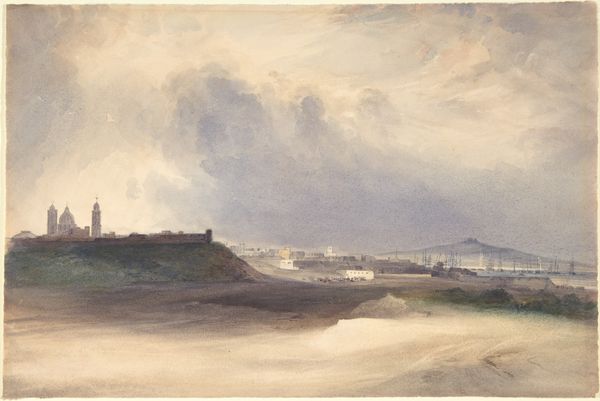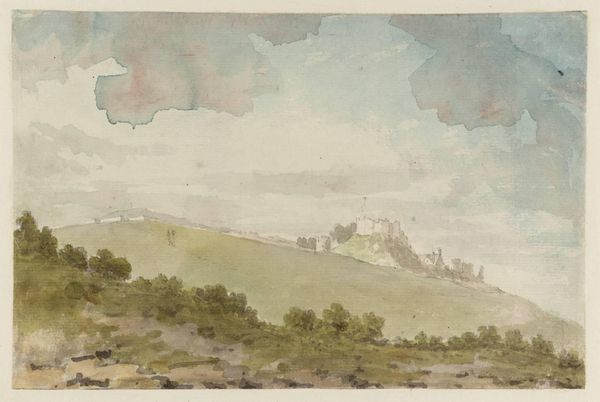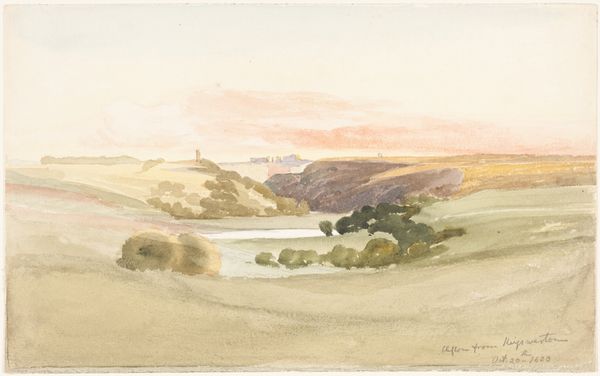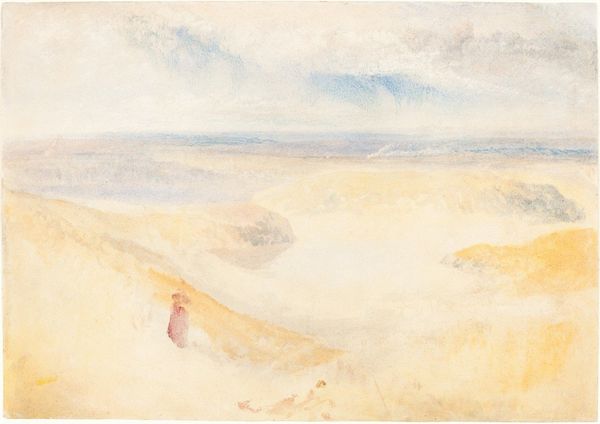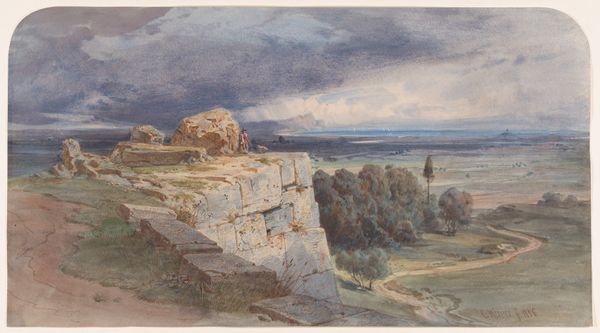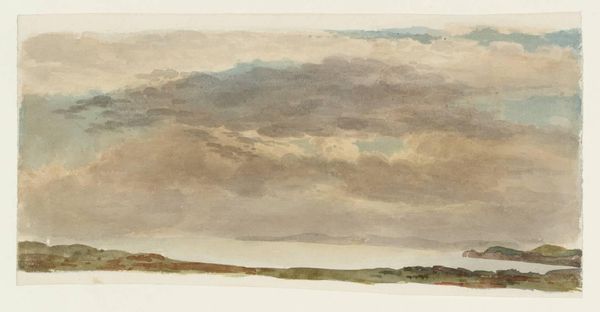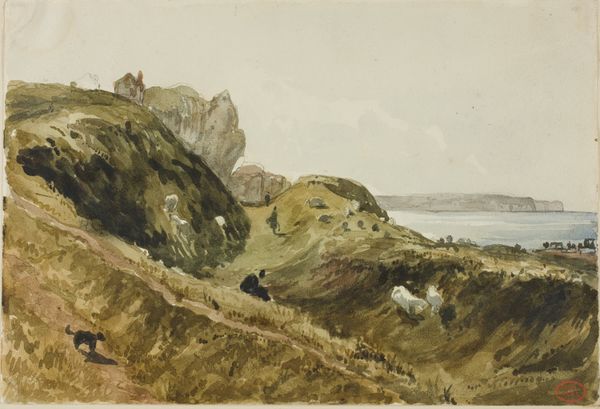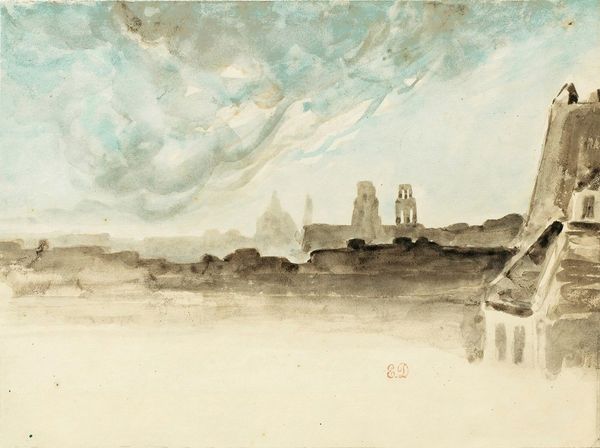
painting, watercolor
#
painting
#
landscape
#
oil painting
#
watercolor
#
cityscape
#
watercolor
#
realism
Dimensions: 35 x 45 cm
Copyright: Public domain
Editor: Here we have "View of the Claudian Aqueduct" by Enrico Nardi. It's either an oil painting or a watercolor, or perhaps both were used! I find it has such a serene, almost melancholic mood. What strikes you about it? Curator: The use of watercolor, and perhaps some oil, to depict the aqueduct reveals much about the consumption and representation of ruins. Notice how Nardi focuses on the weathered stones and the vast emptiness around them. It speaks to a certain type of romanticism prevalent at the time—a fascination with decay and the remnants of past labor used for aesthetic pleasure. Editor: So, it's less about the aqueduct itself, and more about the *idea* of the aqueduct? Curator: Exactly! It is less about Roman engineering and more about the appropriation of historical structures for artistic and cultural capital. What about the way that infrastructure shapes human labor in constructing it versus experiencing the artwork later, as if nature is the source? Look closely at how Nardi applies paint in thin washes versus thicker impasto. Editor: I hadn’t thought about that distinction between labor and aesthetic appreciation before, or how it affects our modern perceptions! The hazy treatment of light almost obscures labor completely. Curator: The artist obscures labor and emphasizes romantic interpretations that reinforce existing hierarchies, shifting focus from the process of constructing and maintaining such systems. How might considering these ideas shape how we interact with similar "landscapes" today? Editor: Wow, I see this landscape so differently now! I had focused on the beautiful colours, but missed this material analysis entirely. Curator: Recognizing the context in which such representations emerge deepens our engagement. It reminds us to question not just what we see, but how and why.
Comments
No comments
Be the first to comment and join the conversation on the ultimate creative platform.
